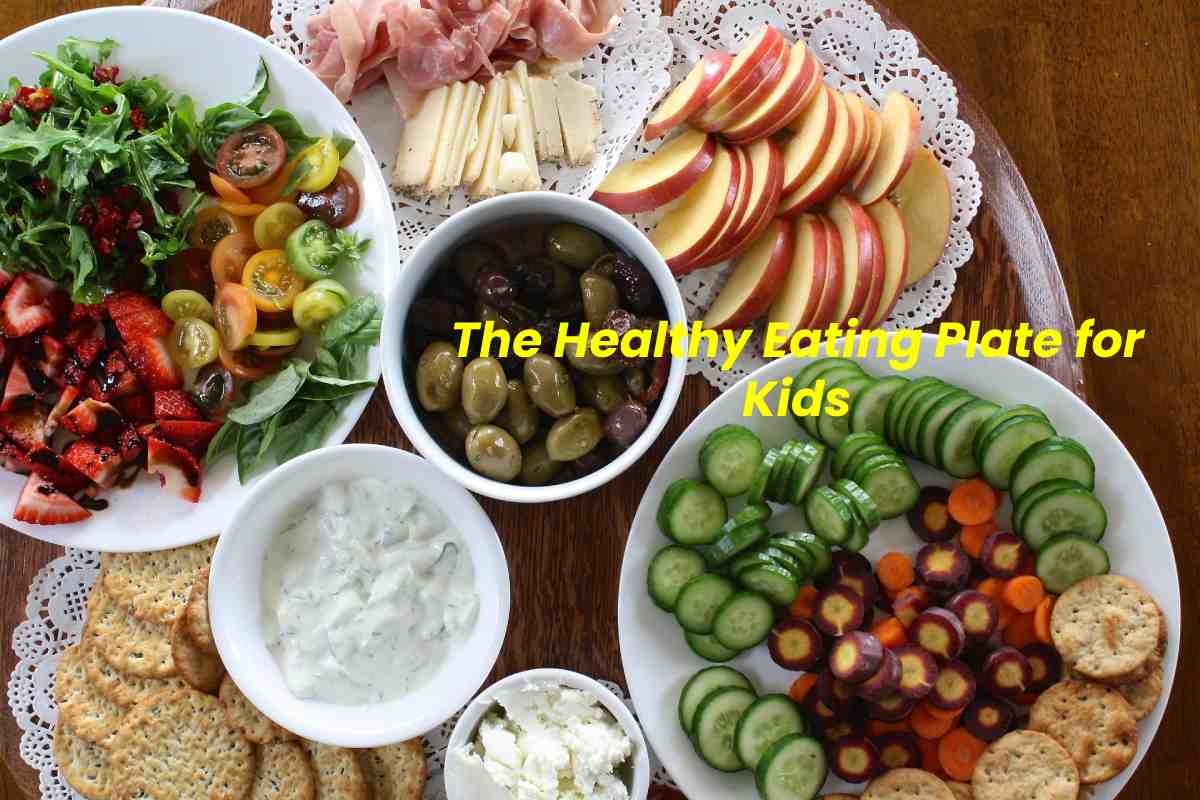Table of Contents
What Is Healthy Eating?
Healthy eating means eating various foods so that your child gets the nutrients (such as protein, carbohydrates, fats, vitamins, and minerals ) he needs for average growth. If your child eats a wide variety of staple foods regularly, he will be well nourished.
How Much Food Is Good For Your Child?

With infants and toddlers, you can usually let them eat the right amount at each meal, as long as you only give them access to healthy foods.
Babies cry to let us know they are hungry. Then, when they are complete, they stop eating. Things get complicated at 2 or 3 years of age when children begin to prefer certain foods, reject the taste of other foods, and have a lot of variability in how hungry they feel. But even then, it’s often best to give them access only to healthy foods and let them decide how much to eat.
You may be concerned that your child eats very little during a meal. Children tend to eat the same number of calories every day or two if they decide how much to eat. But the pattern of calorie consumption can vary from day today. One day, a child might eat a lot for breakfast, a lot for lunch, and almost nothing for dinner. The same child might eat very little for breakfast the next day, but he might eat a lot for lunch and dinner. So don’t expect your child to eat the same amount of food at every meal and snack every day.
How Can You Help Your Child Eat Well And Be Healthy?
Many parents worry that their child is eating too much or too little. Your child may only want to eat one type of food, for example, peanut butter and jelly sandwiches. One way to help your child eat well and help you worry less is to know what her homework is and your son’s homework when it comes to eating. If her son only wants to eat one type of food, she does the parent’s job of deciding on the food alternatives. Choosing what foods are offer is the task of the parents.
- Their job is to offer nutritious food alternatives at meals and snacks. You decide what, where and when to eat.
- Your child’s job is to decide how much food they serve to eat. Therefore, your child decides how much or even if she eats.
- If this idea is new to you, it may take you and your child a little time to adjust. However, over time, your child will learn that they will allow him to eat as much or as little as he wants at each meal and snack. In addition, it will encourage your child to continue to rely on her internal hunger gauge.
You Can Help Support Your Child’s Healthy Eating Habits By:
- Eat together as often as possible: Make family meals an enjoyable and joyous time. Avoid making comments about the amount or type of food your child eats. Pressure to eat reduces children’s acceptance of new or different foods.
- Choose healthy foods for your family meals: Children notice their choices and follow your lead.
- Make mealtimes reasonably predictable: For example, eat at about the same time every day and always at the table, even for snacks.
- Have meals often enough (for example, every 3 hours for young children) so that your child does not feel very hungry.
- Outside of talking and enjoying time together: do nothing else during meals—no TV or other distractions.
Here are Other Ways you Can Help Your Child Stay Healthy:
- Set limits for your child on daily TV and computer time.
- Make physical activity a part of your family’s daily life: For example, walk your child to and from school and go for a walk after dinner. Teach your toddler to skip, skip, dance, play catch, ride a bike, and more. Encourage your older child to find their favorites ways to be active.
- Take your child to all recommended follow-up visits: You can use this time to discuss your child’s growth rate, activity level, and eating habits with a doctor.
What causes bad eating habits?
In otherwise healthy children, poor eating habits can develop for various reasons. For example, babies are born with a preference for sweet flavors. But for babies to learn to eat a wide variety of staple foods, they must learn to enjoy other flavors because many nutritious foods are not sweet.
- Food alternatives: If candy and soda are always available, most children will choose those foods over a more nutritious snack. But banning these options can make your child want them even more. Instead, you can include some less healthy foods as part of your child’s meals, so she learns to enjoy them with other foods. Try to keep a variety of nutritious and appealing food options available.
Some Healthy, Kid-Friendly Snack Ideas Include:
- Cheese bars.
- Whole wheat crackers and peanut butter.
- Air-popped or low-fat microwave popcorn.
- Frozen juice bars are made with 100% natural fruit.
- Fresh and dried fruits.
- Baby carrots with hummus or bean dip.
- Low-fat yoghurt with fresh fruit.
- The need for a personal preference: Power struggles between a parent and child can affect eating behavior. If children are pressured to eat a particular food, they are more likely to refuse to eat that food, even if it is something they usually enjoy. Instead, offer a variety of nutritious foods. Your child can decide what and how much he will eat from the options you offer.
- Feelings: A child’s sadness, anxiety, or family crisis can cause them to underheat or overeat. If you think your child’s emotions affect his eating, focus on solving the problem causing the feelings rather than the eating behavior.
If your child is healthy and eating a nutritious and varied diet but seems to be eating very little, they may need less energy (calories) than other children. And some children need more daily calories than others of the same age or size, and they eat more than you might expect. But, again, it is because all children have different caloric needs.
In rare cases, a child may eat more or less than usual due to a medical condition that affects their appetite. If your child has a medical condition that affects the way she eats, talk to your child’s doctor about how you can help your child get the right amount of nutrients.

